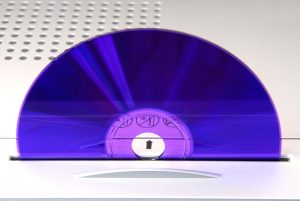 Destruction of evidence by the government can violate a defendant’s right to due process of law. Due process violations often lead to cases being dismissed. Using dismissal as a remedy is based on the principle that denying a defendant access to evidence can make a trial unfair. This is particularly true when the evidence is ‘exculpatory’: it tends to disprove guilt or is otherwise favorable to the defendant. In DUI cases (called “OVI” cases in Ohio), the evidence often includes video from a police cruiser, a body camera, or a police station. When such a video is destroyed by the government, does the case get dismissed? Like so many questions in the legal world, the answer is:
Destruction of evidence by the government can violate a defendant’s right to due process of law. Due process violations often lead to cases being dismissed. Using dismissal as a remedy is based on the principle that denying a defendant access to evidence can make a trial unfair. This is particularly true when the evidence is ‘exculpatory’: it tends to disprove guilt or is otherwise favorable to the defendant. In DUI cases (called “OVI” cases in Ohio), the evidence often includes video from a police cruiser, a body camera, or a police station. When such a video is destroyed by the government, does the case get dismissed? Like so many questions in the legal world, the answer is:
it depends.
‘Materially Exculpatory’ Evidence vs. ‘Potentially Useful’ Evidence
The United States Supreme Court addressed the issue of destroyed evidence in a pair of cases in the 1980s. In California v. Trombetta, the Court held it’s a due process violation for a person to be convicted of a crime when the government fails to preserve ‘materially exculpatory’ evidence. Evidence is ‘materially exculpatory if two conditions are met. First, the exculpatory nature of the evidence must be apparent before the evidence is destroyed. Second, the defendant must be unable to obtain comparable evidence by other reasonable means. In Arizona v. Youngblood, the Court held it’s a due process violation for the government to destroy ‘potentially useful’ evidence, but only if the destruction involved bad faith on the part of the government.
How Is It Proven Evidence Was ‘Materially Exculpatory’?
When most Ohio courts have addressed this issue, they have recognized it is virtually impossible to prove destroyed evidence was materially exculpatory. After all, the evidence was destroyed, so it cannot be examined to determine its exculpatory nature. As a result, in most Ohio appellate districts, when evidence is destroyed, the government has the burden to prove the evidence was not “materially exculpatory”. The defendant must then show that the evidence could not be obtained by other reasonable means. This burden-shifting analysis was used in cases like State v. Benton and Columbus v. Forest.
There are Ohio appellate courts which do not place the burden of proof on the government. In those courts, the defendant must prove the destroyed evidence was materially exculpatory. As mentioned, that is a burden which is all-but-impossible to meet.
What If The Evidence Was ‘Potentially Useful’?
If a case is in an appellate district which places the burden of proof on the defendant, and if the defendant cannot prove the destroyed evidence was materially exculpatory, the defendant can still seek to prove the evidence was potentially useful and destroyed in bad faith. For example, in State v. Combs, an officer believed the cruiser video tape was blank. The officer notified the prosecutor the tape was blank, and then the officer destroyed the tape. This occurred after the defendant made a request for the tape of the cruiser video. The court of appeals commented that the prosecutor should have instructed the officer to preserve the tape. Failing to do so, the Court opined, increased the perception of wrong-doing by the government. The Court concluded this was a sufficient showing of bad faith to find the defendant’s due process rights were violated.
What Should Defense Attorneys Do?
Ohio OVI/DUI defense attorneys should, as early as possible in the case, request that the prosecutor preserve and provide all video evidence related to the case. This will promote preservation of evidence for the defendant to review. This will also preserve the defendant’s ability to make a due process argument if the evidence is destroyed. If the evidence is ultimately destroyed, defense counsel should subpoena the necessary witnesses and exhibits to prepare a solid argument that the evidence was destroyed in bad faith.
 Columbus OVI/DUI Attorney Blog
Columbus OVI/DUI Attorney Blog

